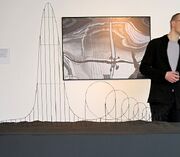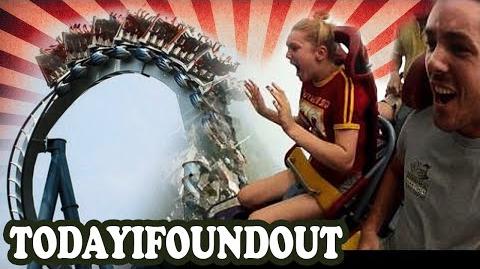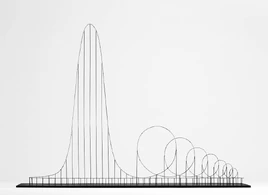| This page uses Creative Commons Licensed content from Wikipedia (view authors). It should be edited to be original; DO NOT remove this notice until this is done. |
This article is an orphan. You can help Coasterpedia by adding links!
| ||||||||||||||||||||||||||||||||||||||
Euthanasia Coaster is an art concept for a sit-down roller coaster designed to kill its riders.[1] In 2010, it was made into a scale model by Julijonas Urbonas, a PhD candidate at the Royal College of Art in London. Urbonas, who has worked at an amusement park, stated that the goal of his concept roller coaster is to take lives "with elegance and euphoria". As for practical applications of his design, Urbonas mentioned "euthanasia" or "execution". John Allen, who served as president of the Philadelphia Toboggan Company, inspired Urbonas with his description of the ideal roller coaster as one that "sends out 24 people and they all come back dead".
Design[]
|
Elements |
The design starts with a steep-angled cable lift to the 1,670 feet (510 meter) top, which would take two minutes for the 24-passenger train to reach. Then, a 1,640 feet (499 meters) drop would take the train to 224 mph (360 km/h), close to its terminal velocity, before flattening out and speeding into the first of its seven slightly clothoid inversions. Each inversion would have a smaller diameter than the one before in order to maintain 10g on passengers while the train loses speed. After a sharp right-hand turn the train would enter a straight, where unloading of bodies and loading of passengers could take place.
Trains[]
24 riders per train.
Pathophysiology[]
Euthanasia Coaster would kill its passengers through prolonged cerebral hypoxia, or insufficient supply of oxygen to the brain. The seven inversions would inflict 10g on its riders for 60 seconds – causing g-force related symptoms starting with gray out through tunnel vision to black out and eventually g-LOC (g-force induced loss of consciousness). Depending on the tolerance of an individual rider to g-forces, the first or second inversion would cause cerebral anoxia, rendering the riders brain dead. Subsequent inversions would serve as insurance against unintentional survival of particularly robust riders.
Controversiality[]
The design led to concern from anti-euthanasia association Care Not Killing, as it is a hypothetical means of euthanasia.
Exhibition[]

Urbonas' concept drew media attention when shown as part of the HUMAN+ display at the Science Gallery in Dublin from April through June 2011.[1] The display, designated as its 2011 'flagship exhibition' by the Science Gallery, aims to show the future of humans and technology. Within this theme, the Euthanasia Coaster highlights the issues that come with life extension.



